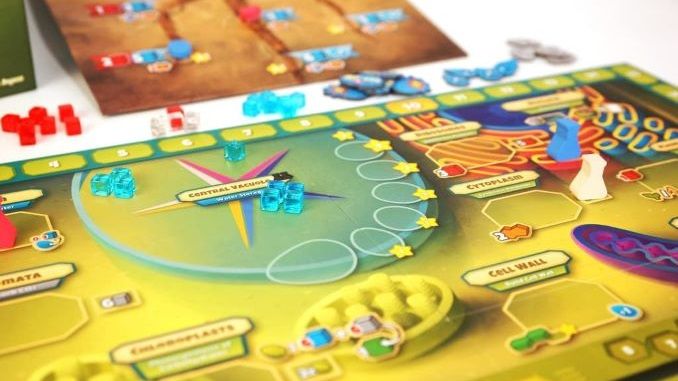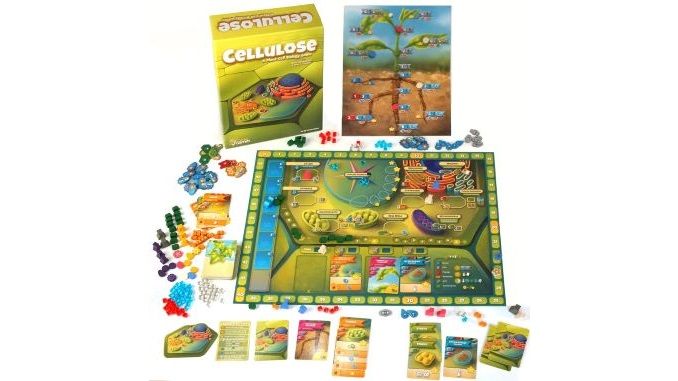The Board Game Cellulose Makes Science Fun, and You Might Actually Learn a Little Something from It, Too

Cellulose: A Plant Cell Biology Game is the latest game from Genius Games and owner John Coveyou, who co-designed this title with Steve Schlepphorst. It’s part of their line of science education games that includes Cytosis, Subatomic, Periodic (played on the periodic table), and last year’s Genotype, which was their best (and best-looking) game to date.
Cellulose is a sort of spiritual sequel to Cytosis, which earned a commendation from the Journal of Cell Science; both are worker placement games built around the inner workings of a biological cell, with many of the typical trappings of light Euro games. Players have to decide whether to just focus on resource management, building quickly to push towards the end game, or to try to build more of an engine using the valuable cards and the game’s version of a tech tree, falling behind early in points but making later rounds much more productive.
In Cellulose, the biggest points come from contributing to the shared construction of the cell wall. When you get six water resources and six CO2 resources, you can use the photosynthesis action to create one cellulose unit; on a subsequent turn, you can use the cell wall action to add one cellulose unit to the wall, gaining anywhere from six to 12 points depending on where you are in the wall. The action spaces where you place a worker to get more water or more CO2 are both more valuable for the first player to go there in each round, which is the case with almost every action space on the board other than cell wall construction.
There is an engine-building path within Cellulose if you’re willing to be patient. You can convert cellulose to five or six mitochondria—they’re the powerhouses of the cell, in case you forgot—and then use those, protein cubes, and sometimes water to buy cards that give you one-time or ongoing bonuses. The best ones come from enzyme cards, which you use once for free, and then can reuse for one protein cube any time you play another enzyme card, creating a chain of free actions as long as you have the protein to pay for it.
At the start of every round, players receive water and CO2 based on their tokens’ locations on the game’s tech tree—an actual tree, on a separate board, where each player has two tokens. The one above the ground grants CO2, and the one below grants water, with the amounts increasing as you pay resources (plant hormones, and later mitochondria) to move your token. The upper branches and the lower roots give you different choices of rewards, which can grow to include additional victory points or other bonuses.

-

-

-

-

-

-

-

-

-

-

-

-

-

-

-

-

-

-

-

-

-

-

-

-

-

-

-

-

-

-

-

-

-

-

-

-

-

-

-

-








































